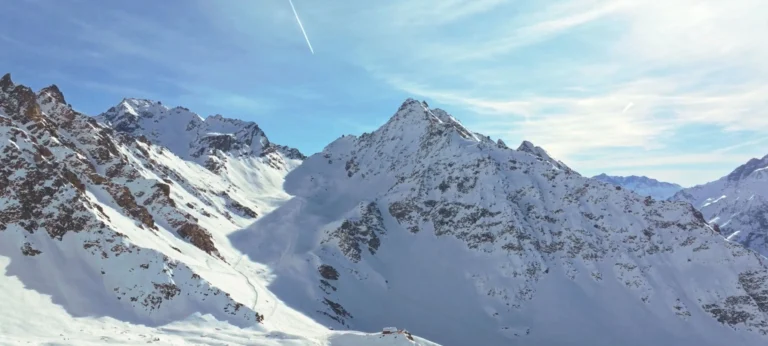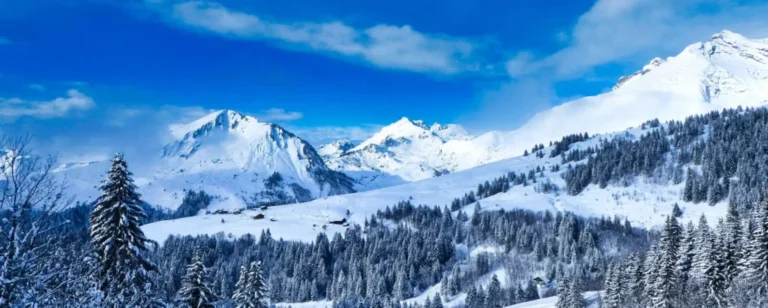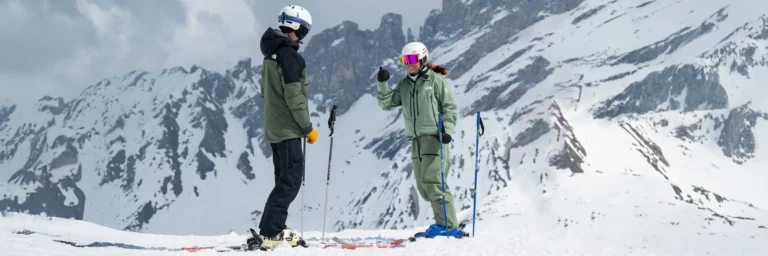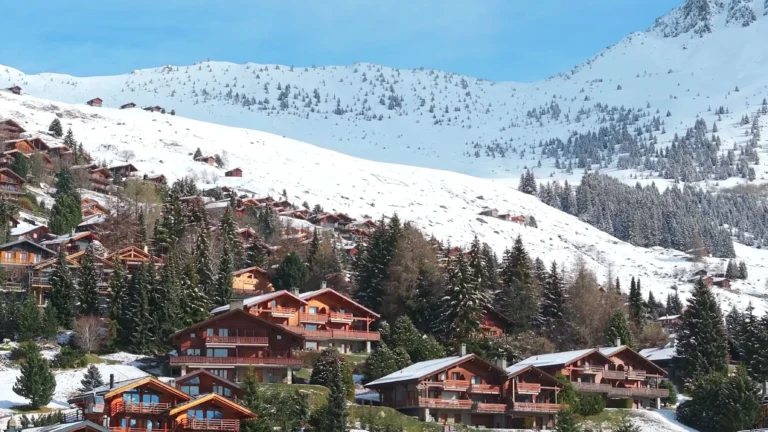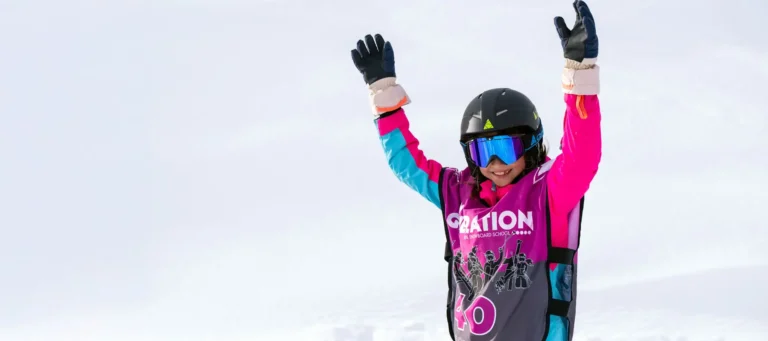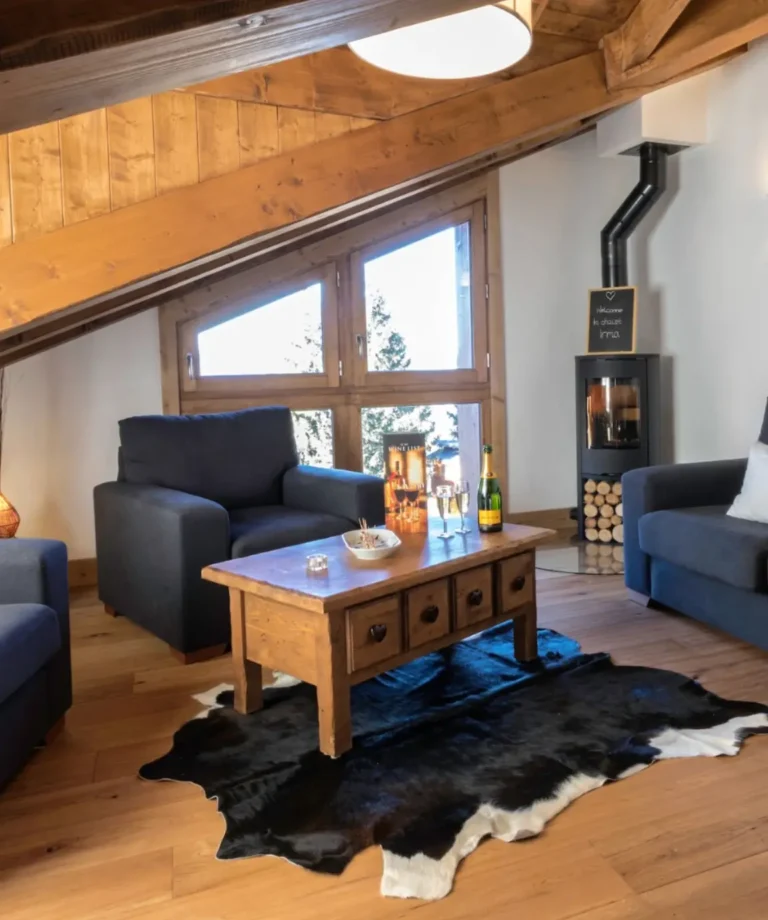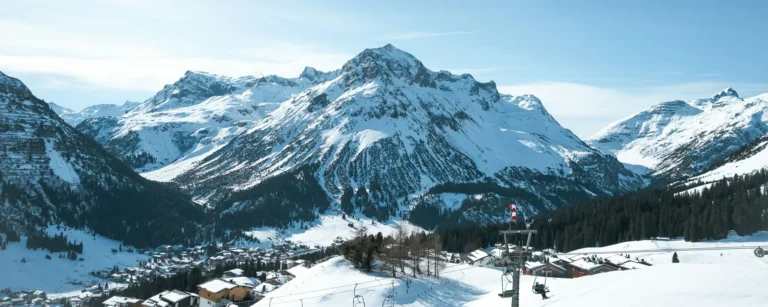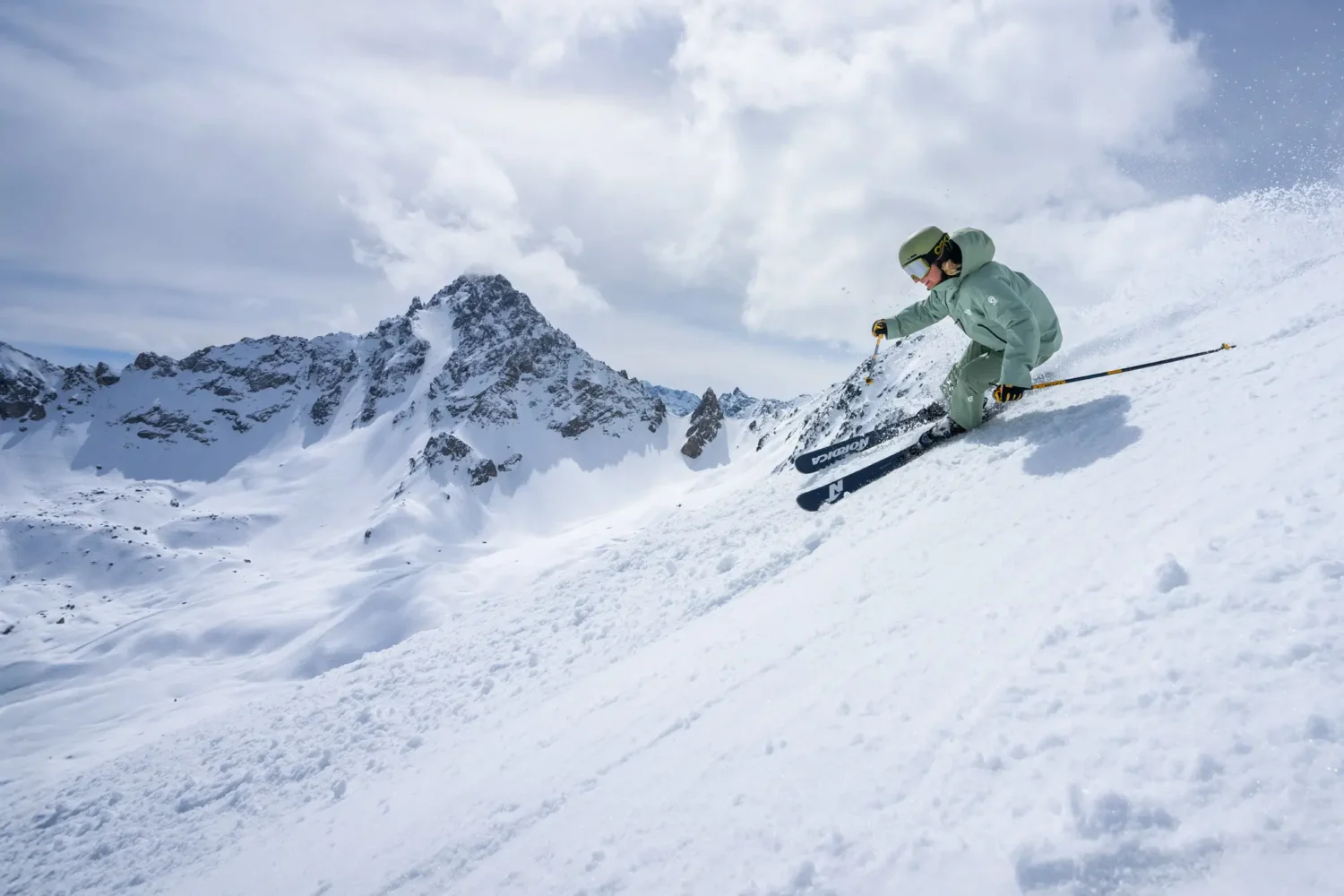From your helmet to your toes, here’s a simple guide to help you stay comfortable, warm, safe and stylish on the slopes.
Head First: Keeping Warm and Protected
Helmet
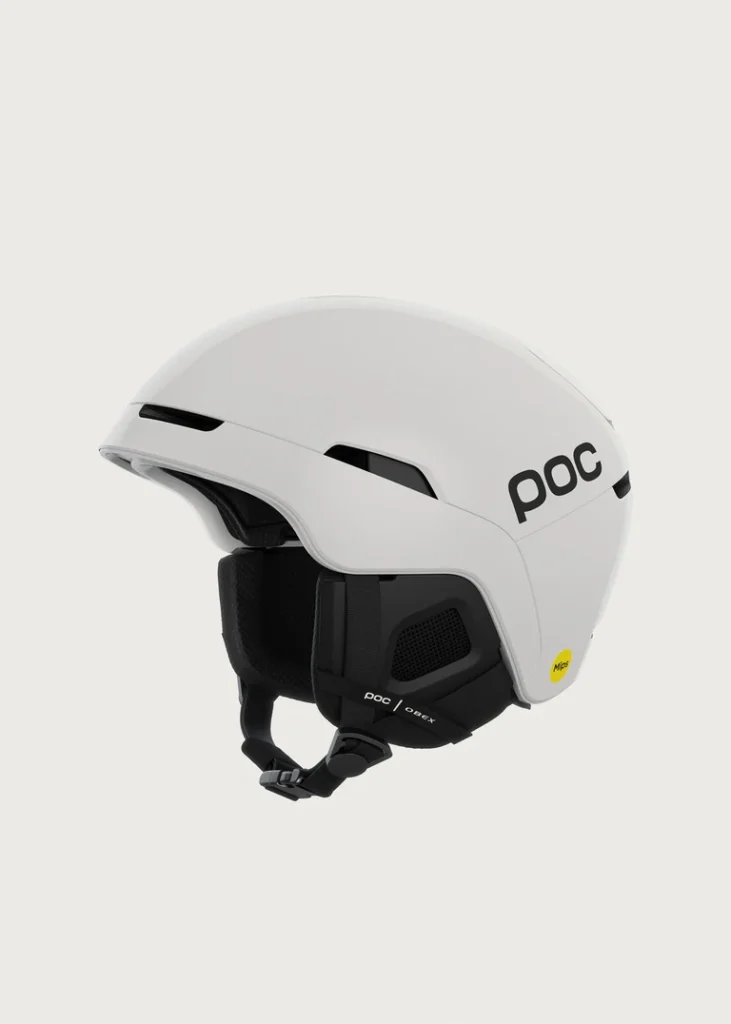
POC Obex MIPS Helmet (Available at Ellis Brigham)
Wearing a helmet is a no-brainer if you’re getting started on skis. While rental helmets can usually be found at ski rental locations, investing in your own is great if you plan to ski often. Helmets must be in perfect condition to be at their most effective. When renting, you don’t always know the helmet’s history.
A well-fitted helmet should feel snug. It shouldn’t crush your head or move around too much, and the chin strap should sit comfortably under your jaw.
You can pick up an adult’s helmet from Ellis Brigham from as little as £80, with them ranging up to £450.Ellis Brigham also has an excellent buying guide that details everything from what kind of helmet is best for you to how to ensure it fits.
Goggles
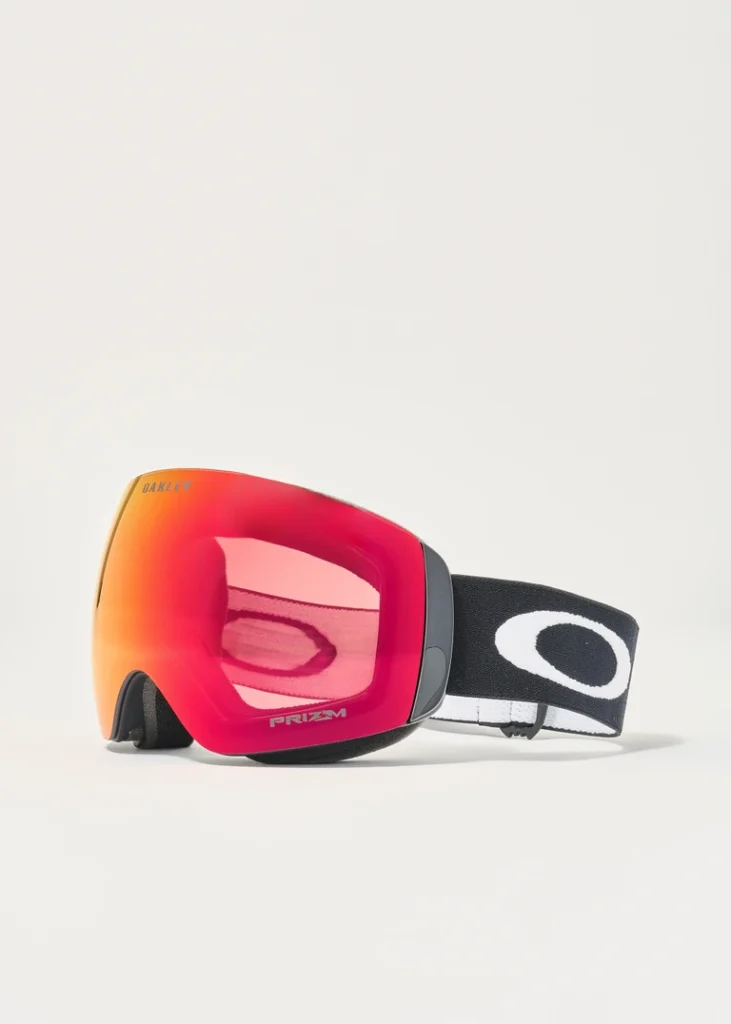
Oakley Flight Deck M Matte Black / Prizm Torch Iridium Goggles (Available at Ellis Brigham)
Good ski goggles protect your eyes from snow glare, UV rays, wind, and flying snow. Look for goggles with UV protection that fit snugly with your helmet.
Ski goggle lenses range from category 0 (night) to 4 (brightest conditions/high altitudes). The amount of light a lens lets through is known as Visual Light Transmission (VLT). A lower VLT is best for bright conditions. A lower VLT is best for flat light and poor visibility.
- Very bright and sunny conditions: Category 4 (3-8% VLT).
Quite dark to look through (in most cases) and blocks out a lot of light.
- Bright conditions: Category 3 (8-18% VLT).
Excellent bright weather protection and some definition, often quite versatile.
- Suitable for most light conditions: Category 2 (18-43% VLT).
Usually orange or rose, this lens gives definition in low light and has a coating to reduce glare in bright light. It is a very versatile and popular lens type.
- Low light and snow conditions: Category 1 (43-80% VLT).
Typically rose, orange or yellow tint. Actively enhance light to increase definition.
Interchangeable lenses give you the best vision in any light with the same pair of goggles. These types of goggles are usually more expensive. New goggles can be bought from £35 to £350. Budget conscious? Then opt for non-interchangeable orange lenses. These lenses will act as a middle ground with fair performance in most lights. If you’d like more help deciding which goggles are best, then Ellis Brigham has a brilliant ski goggles guide.
Buff or Balaclava
A Buff or Balaclava provides extra warmth around your neck and lower face, as a barrier against wind and snow. Opt for a thin, moisture-wicking material to avoid bulk and discomfort under the helmet.
Balaclavas that cover your nose and mouth will make you colder throughout the day. The moisture in your breath will inevitably cause them to get wet, making you very cold and uncomfortable.
Instead, look to have it down the sides of your face, down to your chin. This will keep your neck and face warm while enabling you to keep your face dry and breathe easily.
Dressing Your Upper Body
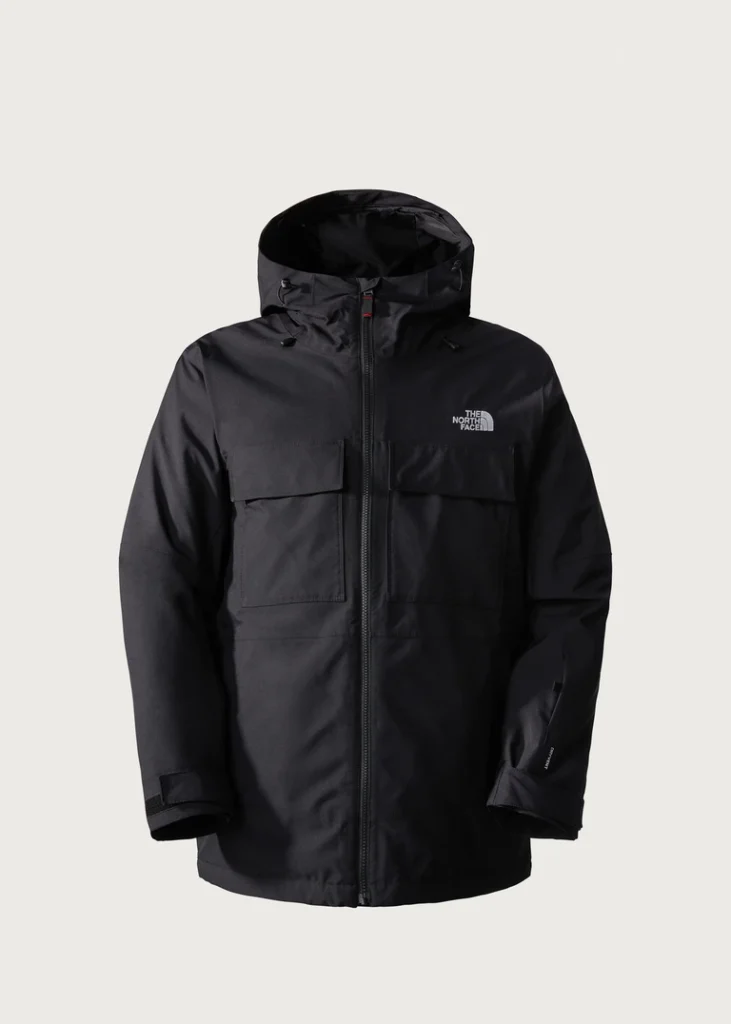
The North Face Men’s Fourbarrel Triclimate Jacket (Available at Ellis Brigham)
Base Layer (Thermal Top)
Even on a cloudy day, the sun’s reflection on snow can lead to sunburn. Apply sunscreen with a high SPF and keep lip balm handy to protect your lips from the cold and drying wind.
Mid Layer (Fleece or Insulated Jacket)
The mid layer traps heat and provides insulation. Fleece tops or lightweight insulated jackets are great options. If the weather’s particularly cold, double up with a fleece and a jacket.
Ski Jacket
Your outer layer protects you from wind, snow, and moisture. A waterproof and breathable ski jacket is essential. Look for features like pockets for your lift pass, vents, snow skirts and a high waterproof rating (10,000mm or more).
Some people prefer to wear an insulating down jacket under a waterproof and windproof shell jacket. Combining the two may keep you warmer and drier than one insulating and waterproof jacket.
Finding a jacket with many usable pockets is also useful, especially if you don’t plan on bringing a bag.
Lower Body Essentials
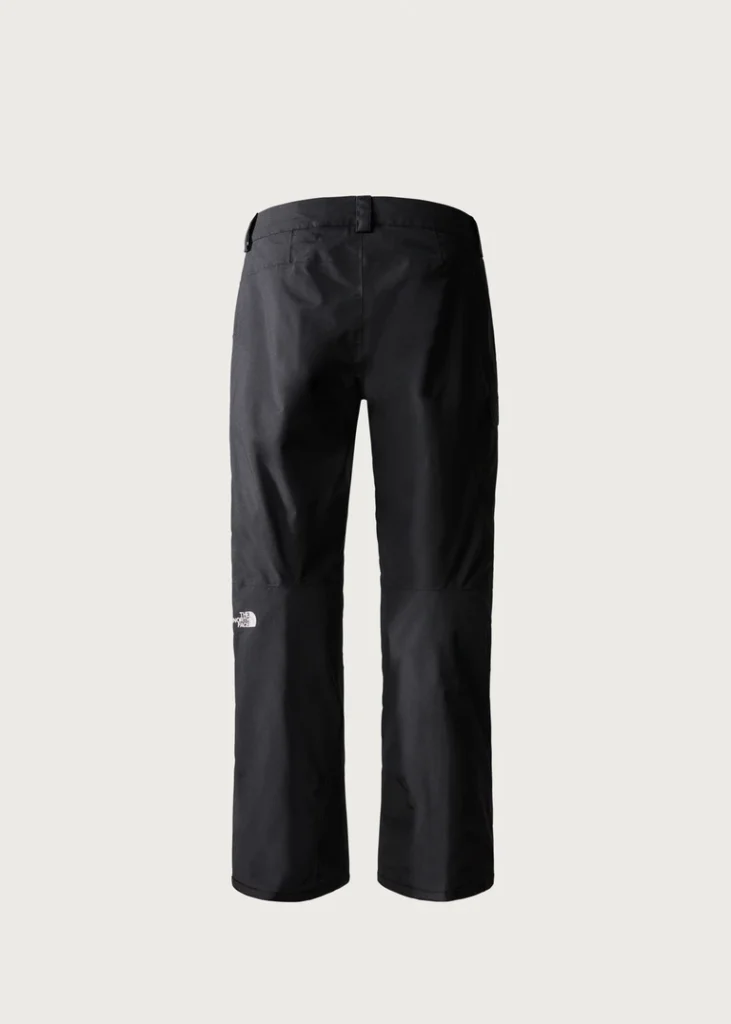
The North Face Men’s Freedom Insulated Pants (Available at Ellis Brigham)
Base Layer (Thermal Bottoms)
Start with a good pair of thermal leggings or tights made from moisture-wicking fabric, like your upper body. These will keep your legs warm. Ensure not to tuck them into your ski boots. This will be highly uncomfortable.
Salopettes
Salopettes are an outer layer that keeps your lower body dry and warm. Look for a good water—and windproof rating, adjustable waistbands, and reinforced material around the ankles. This will protect them from fraying on the ski’s edges. They should fit comfortably over your base layer, enabling you to move freely.
Hands and Feet
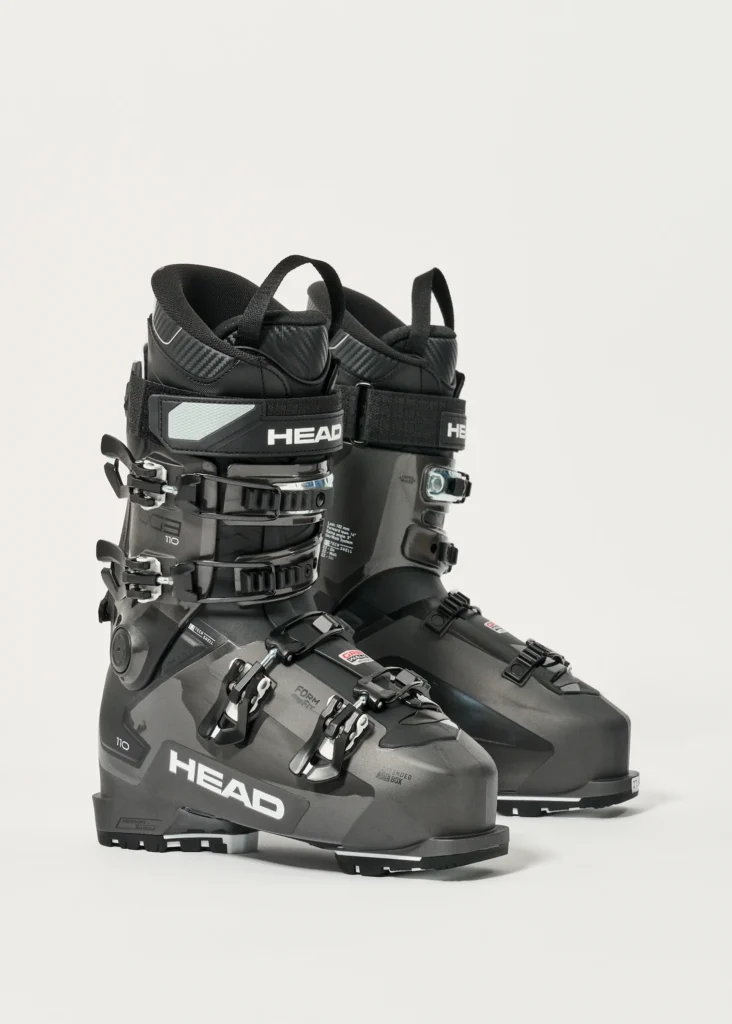
Head Edge 110 HV GW Ski Boots (Available at Ellis Brigham)
Ski Gloves or Mittens
Cold hands can ruin your day, so a good pair of waterproof, insulated gloves or mittens is essential. Mittens tend to be warmer, but gloves provide better dexterity if you need to grab or adjust anything on the slopes.
Ski Socks
Proper ski socks are longer and thinner than regular socks. They’re designed to keep your feet warm without causing blisters. Choose socks made from merino wool or synthetic fabric, and avoid cotton socks entirely. Don’t double up on socks—that can restrict blood flow and make your feet colder.
Boots
Your ski boots need to be a perfect fit. They should feel snug, but not too tight or uncomfortable. Make sure you try on your shoes with the ski socks you plan to wear for skiing.
For your first skiing trips, we recommend renting boots. Once you’ve found your feet, investing in a pair of custom-fitted boots is a brilliant idea. Be sure to check for any pressure points or areas where the boot may rub against your foot.
Custom insoles or liners are also a great idea to ensure maximum comfort and performance.If you’re looking to invest in new boots, you should be willing to spend more than £250. We recommend going into a shop to get them fitted rather than buying online and finding out later. If you need help with a fitting, the experts at Ellis Brigham will be happy to help you.
Extras to consider
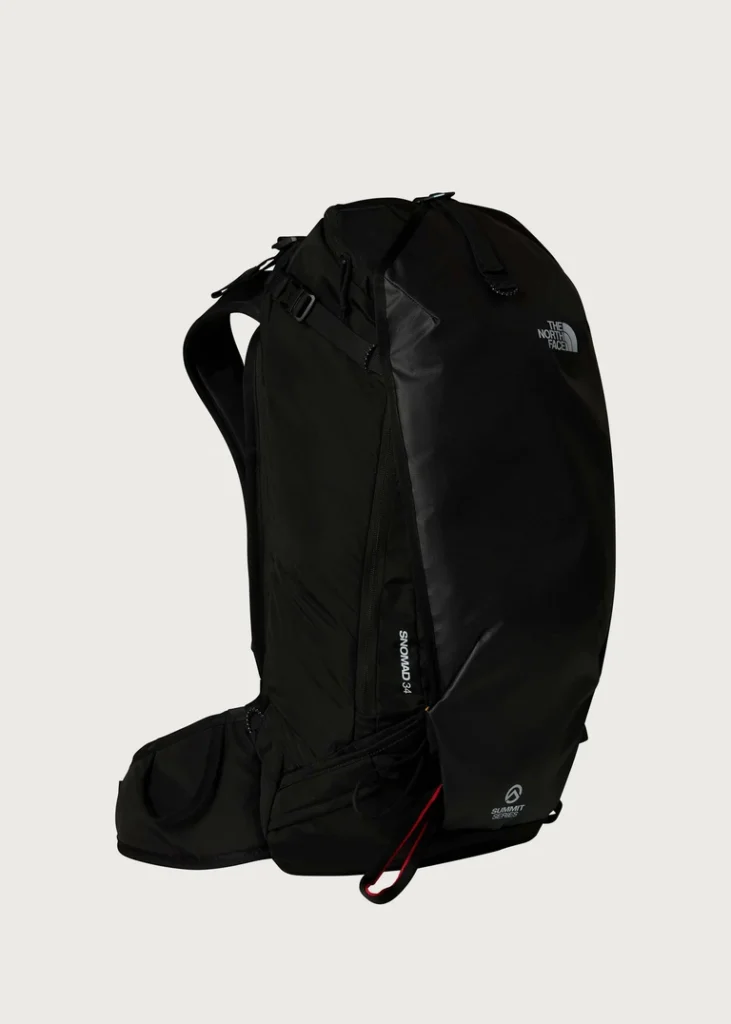
The North Face Snowmad 34 Backpack (Available at Ellis Brigham)
Sunscreen and Lip Balm
Believe it or not, the sun’s reflection on snow can lead to sunburn—even on a cloudy day. Apply sunscreen with a high SPF and keep lip balm handy to protect your lips from the cold and drying wind.
Backpack (Optional)
Some people wear backpacks while skiing to hold essentials like water, snacks, extra layers, and sunscreen. However, we wouldn’t recommend wearing a backpack on your first lesson. A backpack, particularly if it’s heavy, will pull your centre of mass backwards, making it even more challenging to find your balance. If you want to ski with a backpack, ensure that it is one with chest straps.
A great solution is to have a jacket with large pockets that can hold what you need while being selective about what you bring. If you’re skiing with family members who are still growing and you’re wondering what you should buy and what’s better to rent, we have a handy guide on buying vs. renting for teens.

